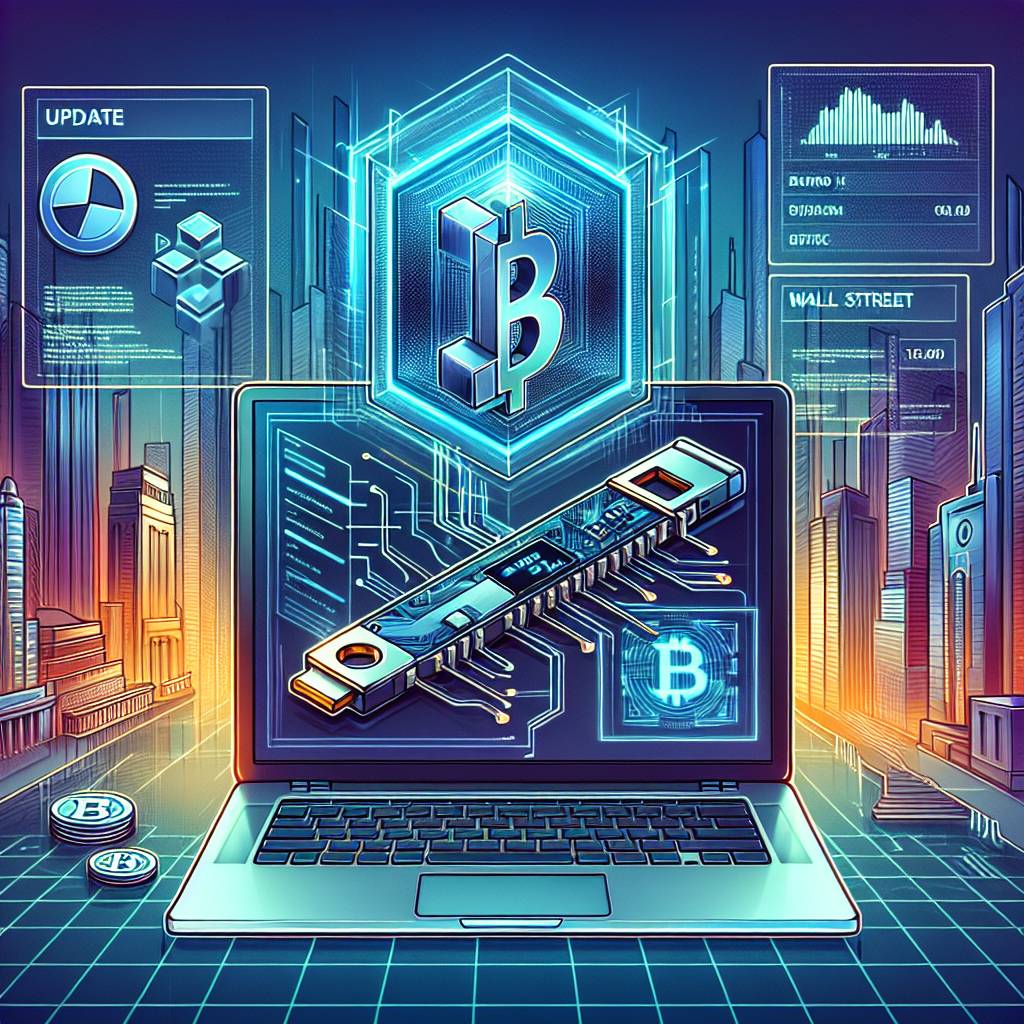How to update the firmware on a cryptocurrency hardware wallet?
Can you provide a step-by-step guide on how to update the firmware on a cryptocurrency hardware wallet?

5 answers
- Sure! Here's a step-by-step guide on how to update the firmware on a cryptocurrency hardware wallet: 1. Connect your hardware wallet to your computer using the USB cable. 2. Open the official software provided by the wallet manufacturer. 3. Check if there are any firmware updates available. If yes, proceed to the next step. 4. Follow the instructions provided by the software to initiate the firmware update process. 5. Wait for the update to complete. This may take a few minutes. 6. Once the update is finished, disconnect your hardware wallet from the computer. Remember to always download the firmware update from the official website of the wallet manufacturer to ensure its authenticity and security.
 Mar 01, 2022 · 3 years ago
Mar 01, 2022 · 3 years ago - Updating the firmware on a cryptocurrency hardware wallet is crucial for maintaining the security and functionality of your wallet. Here's a simple guide to help you: 1. Connect your hardware wallet to your computer using the provided USB cable. 2. Open the wallet's official software on your computer. 3. Look for the 'Firmware Update' or similar option in the software. 4. If there's an available update, click on the 'Update Firmware' button. 5. Follow the on-screen instructions to complete the update process. 6. Once the update is finished, disconnect your hardware wallet from the computer. Remember to always double-check the authenticity of the firmware update file and download it from the official website of the wallet manufacturer.
 Mar 01, 2022 · 3 years ago
Mar 01, 2022 · 3 years ago - Updating the firmware on a cryptocurrency hardware wallet is an important step to ensure the security of your digital assets. Here's how you can do it: 1. Connect your hardware wallet to your computer using the USB cable. 2. Open the official software provided by the wallet manufacturer. 3. Look for the 'Firmware Update' option in the software. 4. If there's a new firmware version available, click on the 'Update Firmware' button. 5. Follow the prompts to initiate the firmware update process. 6. Wait for the update to complete, and then disconnect your hardware wallet from the computer. Remember to always download the firmware update from a trusted source and verify its authenticity before proceeding with the update.
 Mar 01, 2022 · 3 years ago
Mar 01, 2022 · 3 years ago - Updating the firmware on a cryptocurrency hardware wallet is a straightforward process. Here's what you need to do: 1. Connect your hardware wallet to your computer using the USB cable. 2. Open the official software provided by the wallet manufacturer. 3. Look for the 'Firmware Update' option in the software. 4. If there's an available update, click on the 'Update Firmware' button. 5. Follow the on-screen instructions to complete the update. 6. Once the update is finished, disconnect your hardware wallet from the computer. Remember to always download the firmware update from a reputable source and verify its authenticity.
 Mar 01, 2022 · 3 years ago
Mar 01, 2022 · 3 years ago - Updating the firmware on a cryptocurrency hardware wallet is a necessary step to ensure the security of your funds. Here's a simple guide to help you: 1. Connect your hardware wallet to your computer using the provided USB cable. 2. Open the official software provided by the wallet manufacturer. 3. Look for the 'Firmware Update' option in the software. 4. If there's a new firmware version available, click on the 'Update Firmware' button. 5. Follow the instructions on the screen to complete the update process. 6. Once the update is finished, disconnect your hardware wallet from the computer. Remember to always download the firmware update from the official website of the wallet manufacturer to ensure its authenticity and avoid any potential security risks.
 Mar 01, 2022 · 3 years ago
Mar 01, 2022 · 3 years ago
Related Tags
Hot Questions
- 97
How can I minimize my tax liability when dealing with cryptocurrencies?
- 88
What are the best digital currencies to invest in right now?
- 79
Are there any special tax rules for crypto investors?
- 70
What are the tax implications of using cryptocurrency?
- 58
What is the future of blockchain technology?
- 49
How can I buy Bitcoin with a credit card?
- 41
How can I protect my digital assets from hackers?
- 23
What are the best practices for reporting cryptocurrency on my taxes?